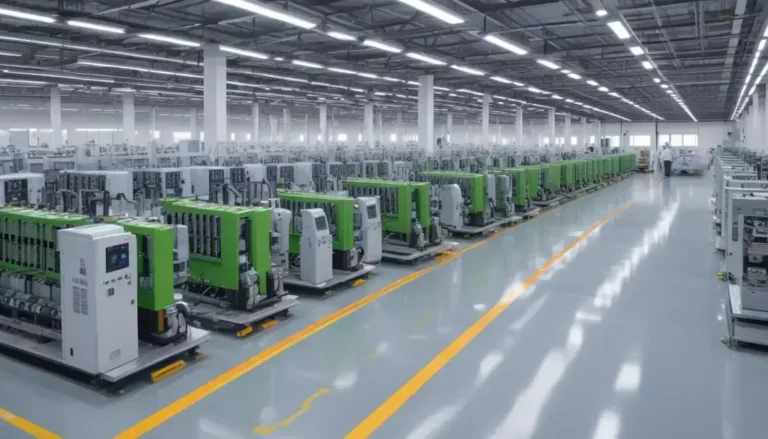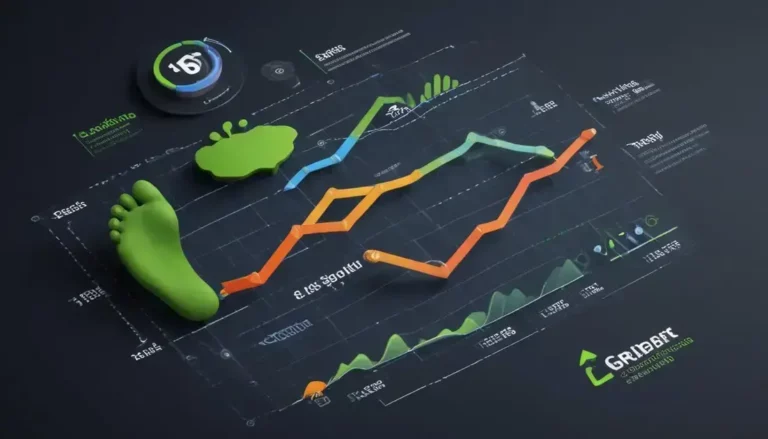LEGO’s Shift to Sustainable Materials and Energy
LEGO is committed to sustainability by using certified sustainable materials, transitioning to renewable energy, and engaging children in environmental awareness through play initiatives, aiming to inspire future generations to care for the planet.
Sustainable materials are at the forefront of LEGO’s innovative practices. This shift marks a significant leap in their commitment to sustainability, inviting curiosity about their strategies and future aspirations.
LEGO’s sustainability goals for 2024
LEGO is setting ambitious sustainability goals for 2024, focusing on increasing the use of sustainable materials in their products. The company aims to double the proportion of sustainable materials used in its production process, emphasizing a commitment to environmentally friendly practices.
This initiative reflects LEGO’s dedication to reducing their carbon footprint and promoting sustainability in the toy industry. By embracing renewable energy and sustainable sourcing, LEGO is not only minimizing waste but also inspiring future generations to engage in creative play with eco-friendly toys.
Transitioning to Renewable Energy: In addition to using sustainable materials, LEGO is also aiming to power its factories and operations with 100% renewable energy. This shift is crucial for the company as they strive to align their practices with global sustainability targets.
LEGO’s focus on sustainability extends beyond their manufacturing processes. They are also committed to educating children about environmental responsibility through their products and initiatives, ensuring that play inspires awareness and action towards a sustainable future.
Doubling sustainable material use
LEGO is set to double its use of sustainable materials in 2024, a significant step towards minimizing environmental impact. This initiative reflects LEGO’s commitment to a more sustainable future, ensuring that their products are made from materials sourced responsibly.
The push for sustainable materials includes using recycled plastics and bioplastics derived from renewable sources. By investing in these alternative materials, LEGO is not only reducing reliance on fossil fuels but also setting a benchmark for the toy industry.
Implementation Strategies: To achieve this ambitious goal, LEGO is enhancing its supply chain to ensure that sustainable materials are readily available for production. Partnering with innovative suppliers and developing new technologies are key elements in this process. Notably, this effort will create a more transparent supply chain that aligns with global sustainability standards.
LEGO’s goal goes beyond just the materials; it aims to educate consumers about the importance of sustainability. By promoting eco-friendly practices, LEGO inspires children and families to engage in responsible play, cultivating a sense of environmental stewardship in future generations.
Shifting from fossil fuels to renewable energy
LEGO is committed to shifting from fossil fuels to renewable energy as part of its sustainability strategy. This transition is vital for reducing the company’s carbon footprint and achieving its long-term environmental goals. By 2024, LEGO aims to operate its manufacturing facilities solely on renewable energy sources.
The company is investing in wind and solar energy to power its factories. This initiative not only enhances operational efficiency but also aligns with global efforts to combat climate change. Implementing renewable energy sources marks a significant milestone for LEGO, showcasing its dedication to environmental stewardship.
Innovations in Energy Use: LEGO is exploring innovative technologies to harness renewable energy more effectively. These innovations include advanced energy storage systems and sustainable energy management strategies to ensure a stable energy supply. This approach will ensure that LEGO’s production processes remain uninterrupted while maintaining a commitment to sustainability.
Furthermore, LEGO promotes renewable energy within the broader community. By sharing knowledge and resources, LEGO encourages other companies to follow suit. This collaboration aims to foster a culture of sustainability, where businesses collectively work towards a greener future, ultimately benefiting the planet and future generations.
Impact on global children through play initiatives
LEGO’s sustainability initiatives extend beyond materials and energy practices; they positively influence global children through play initiatives. The company understands that play is essential for child development, fostering creativity and learning. By ensuring that their toys are environmentally friendly, LEGO is teaching children about the importance of sustainability.
Through programs like LEGO Foundation, the company is committed to making a difference in children’s lives worldwide. These initiatives include partnerships with schools and communities to provide resources that promote playful learning. By integrating sustainability into these programs, LEGO encourages children to think critically about the environment.
Creating Awareness: LEGO’s efforts to educate children about sustainability create awareness in the young minds. Workshops, educational kits, and interactive events are designed to engage children with the concept of environmental stewardship. By making learning fun, LEGO instills lifelong values in play that prioritize health and sustainability.
This approach not only impacts children’s perspectives but also empowers them to be agents of change. LEGO inspires future generations to embrace creativity and innovation while remaining mindful of their ecological footprint. As children play, they learn the fundamental principles of sustainability, paving the way for a more environmentally conscious future.
Details on certified sustainable materials
LEGO is committed to using certified sustainable materials in its product lines as part of a broader effort to enhance environmental responsibility. These materials are sourced from suppliers who adhere to stringent sustainability standards, ensuring a lower impact on the planet.
Among the sustainable options are recycled plastics and bioplastics, which are derived from renewable resources. The use of these materials significantly reduces the reliance on fossil fuels and minimizes waste in production processes. This commitment to sustainability is a core part of LEGO’s identity and is vital for its future operations.
Certification Processes: To guarantee sustainability, LEGO collaborates with organizations that provide rigorous certification processes. These certifications validate that the materials used meet established criteria for environmental friendliness and ethical sourcing. By maintaining transparency in its supply chain, LEGO builds trust with consumers who are increasingly environmentally conscious.
LEGO’s focus on certified sustainable materials not only enhances product sustainability but also educates consumers about the importance of choosing eco-friendly options. This initiative fosters a culture of sustainability that extends beyond toys, encouraging families to consider the environmental impact of their purchasing decisions.
LEGO factories transitioning to green energy
LEGO is actively transitioning its factories to green energy, marking a significant shift towards sustainability. The company has committed to powering all of its manufacturing facilities with 100% renewable energy sources by 2024. This transition is crucial for reducing LEGO’s carbon footprint and aligning its operations with global climate goals.
To achieve this, LEGO is investing heavily in solar and wind energy. By installing solar panels and utilizing wind turbines, the company can generate clean energy on-site, significantly decreasing reliance on fossil fuels. This approach not only supports environmental initiatives but also enhances operational efficiency.
Innovative Energy Solutions: LEGO is also exploring energy storage solutions to ensure a reliable power supply, even during periods of low energy production. These innovations are essential for maintaining uninterrupted production while adhering to sustainability goals.
Additionally, LEGO aims to set an example in the manufacturing sector by sharing its experiences and strategies with other companies. This proactive approach fosters collaboration within the industry, encouraging others to adopt green energy solutions. By prioritizing renewable energy in its factories, LEGO not only contributes positively to the environment but also inspires a movement towards sustainable manufacturing practices worldwide.
CEO’s vision on sustainable play
The CEO of LEGO has a clear vision for sustainable play, emphasizing the role that toys can play in fostering environmental awareness among children. This vision is rooted in the belief that play should not only be fun but also contribute positively to the planet.
According to the CEO, sustainability is at the heart of LEGO’s business strategy. By integrating eco-friendly materials and renewable energy into their production processes, LEGO aims to inspire the next generation to think critically about sustainability. The CEO believes that through creative play, children can learn essential lessons about the environment and the importance of protecting it.
Community Engagement: LEGO’s approach to sustainable play involves engaging communities and families in environmental initiatives. This includes creating educational programs, workshops, and activities that foster a deeper understanding of sustainability. By involving children in this dialogue, LEGO not only educates them but empowers them to become advocates for change.
The CEO envisions a future where LEGO bricks are not only toys but tools for learning and environmental stewardship. This commitment to sustainability extends beyond products; it is a fundamental aspect of LEGO’s identity. Through this vision, the company aims to lead by example and encourage others in the industry to prioritize sustainability.
Future prospects and investment strategies
As LEGO continues its commitment to sustainability, the future prospects and investment strategies are centered around expanding eco-friendly practices. The company aims to enhance its portfolio of sustainable products, driving innovation in materials and manufacturing processes. This focus not only addresses consumer demand for greener products but also aligns with global sustainability goals.
LEGO is channeling investments into research and development to explore new sustainable materials that can replace traditional plastics. This proactive approach positions LEGO as a leader in the toy industry, showcasing their dedication to minimizing environmental impact. By investing in sustainable technologies, LEGO aims to create a closed-loop system where materials can be reused and recycled efficiently.
Collaboration and Partnerships: To achieve these goals, LEGO is collaborating with environmental organizations and industry leaders. These partnerships enable the sharing of knowledge and resources, fostering innovation in sustainable practices. LEGO’s strategy involves actively participating in initiatives that promote environmental awareness and encourage sustainability within the community.
Looking ahead, LEGO envisions a future where playtime contributes positively to the planet. As they refine their investment strategies, the focus will remain on creating a lasting impact through responsible practices, inspiring both children and adults to be mindful of their ecological footprint.
The Future of LEGO is Bright with Sustainability
LEGO’s commitment to sustainability is transforming the toy industry. Through innovative practices like using certified sustainable materials and shifting to renewable energy sources, LEGO sets a powerful example for others.
By engaging children in play that promotes environmental awareness, LEGO is inspiring the next generation to care for the planet. The company’s focus on collaboration and community involvement strengthens the impact of its initiatives.
As LEGO continues to invest in eco-friendly strategies and technology, its future looks promising. This dedication not only ensures the company’s growth but also contributes to a healthier world for everyone.
With LEGO at the forefront of sustainable play, it encourages others to follow suit, creating a brighter, greener future for all.
Frequently Asked Questions
What is LEGO’s commitment to sustainability?
LEGO is dedicated to using certified sustainable materials and transitioning to renewable energy sources in its production processes.
How does LEGO engage children in sustainability efforts?
LEGO promotes environmental awareness through play initiatives and educational programs that encourage children to think about sustainability.
What are some of the sustainable materials used by LEGO?
LEGO incorporates recycled plastics and bioplastics made from renewable resources into its products.
How does LEGO’s CEO envision the future of sustainable play?
The CEO believes that sustainable play should inspire children to care for the environment and learn lessons about ecological responsibility.
What are LEGO’s investment strategies for sustainability?
LEGO invests in research and development for new sustainable materials and collaborates with partners to foster innovation in eco-friendly practices.
How can other companies follow LEGO’s example in sustainability?
Other companies can adopt similar strategies by prioritizing renewable energy, using sustainable materials, and engaging with communities to promote environmental awareness.





